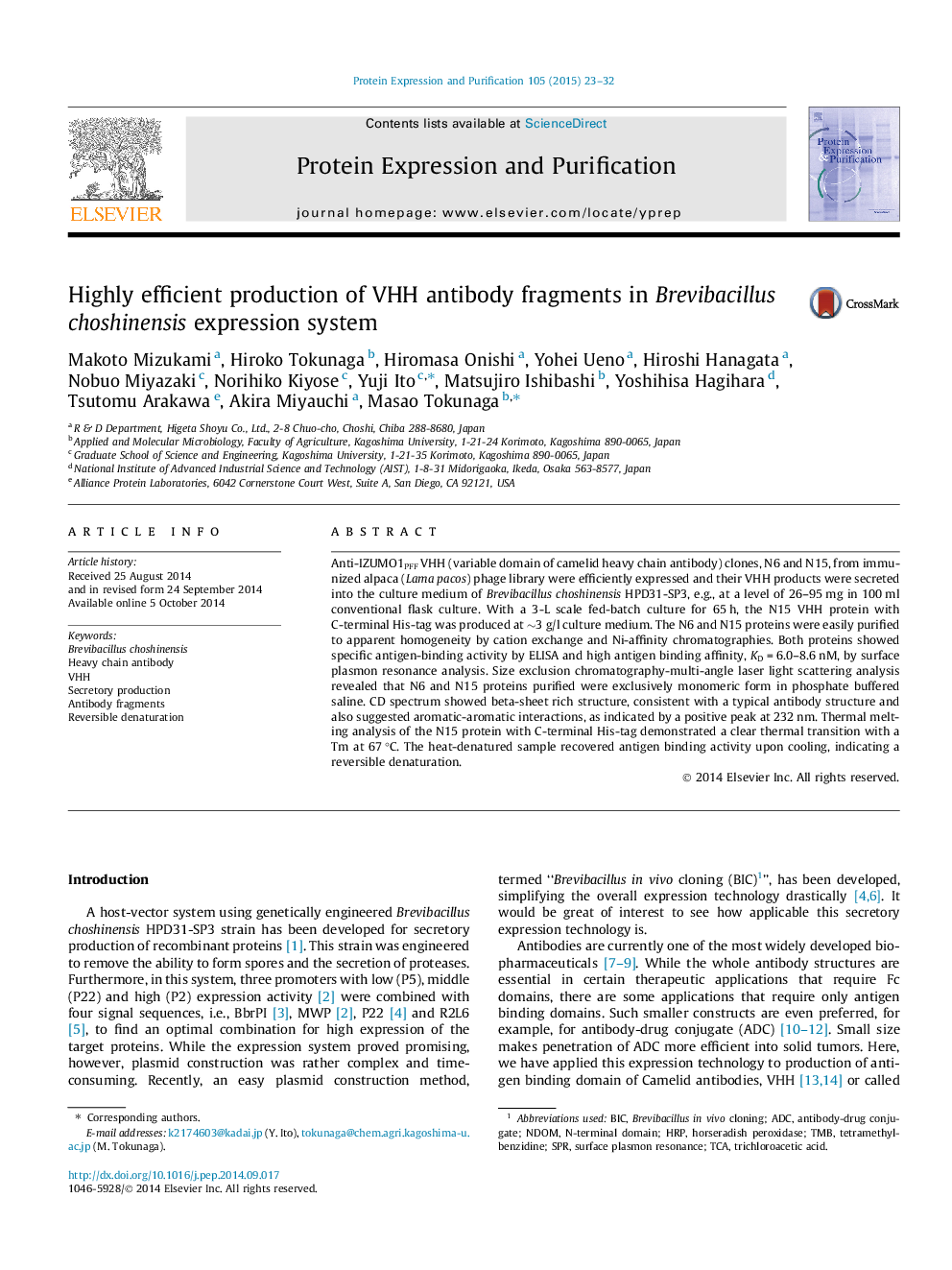| Article ID | Journal | Published Year | Pages | File Type |
|---|---|---|---|---|
| 2020396 | Protein Expression and Purification | 2015 | 10 Pages |
•VHH antibody fragments were efficiently produced (∼3 g/l in fed-batch culture).•Brevibacillus showed the highest productivity of VHH among other systems reported.•VHHs secreted were easily purified to apparent homogeneity.•VHHs were native and active with high affinity (KD = ∼8 nM) and high Ag-specificity.
Anti-IZUMO1PFF VHH (variable domain of camelid heavy chain antibody) clones, N6 and N15, from immunized alpaca (Lama pacos) phage library were efficiently expressed and their VHH products were secreted into the culture medium of Brevibacillus choshinensis HPD31-SP3, e.g., at a level of 26–95 mg in 100 ml conventional flask culture. With a 3-L scale fed-batch culture for 65 h, the N15 VHH protein with C-terminal His-tag was produced at ∼3 g/l culture medium. The N6 and N15 proteins were easily purified to apparent homogeneity by cation exchange and Ni-affinity chromatographies. Both proteins showed specific antigen-binding activity by ELISA and high antigen binding affinity, KD = 6.0–8.6 nM, by surface plasmon resonance analysis. Size exclusion chromatography-multi-angle laser light scattering analysis revealed that N6 and N15 proteins purified were exclusively monomeric form in phosphate buffered saline. CD spectrum showed beta-sheet rich structure, consistent with a typical antibody structure and also suggested aromatic-aromatic interactions, as indicated by a positive peak at 232 nm. Thermal melting analysis of the N15 protein with C-terminal His-tag demonstrated a clear thermal transition with a Tm at 67 °C. The heat-denatured sample recovered antigen binding activity upon cooling, indicating a reversible denaturation.
